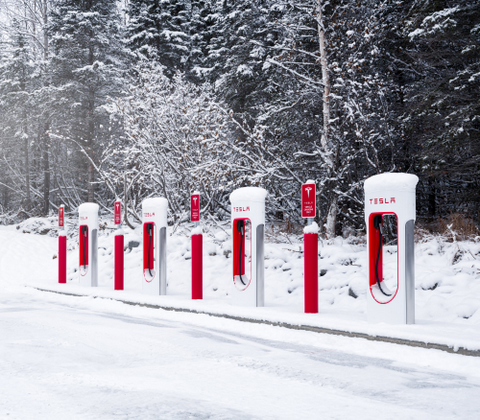Federal Funding Seeks to Grow EV Infrastructure
The Inflation Reduction Act, the National Electric Vehicle Infrastructure (NEVI) program and the Bipartisan Infrastructure Law sought to mend a gap in the U.S. preventing electric vehicles (EVs) from normalizing. The nation, and others worldwide, must make headway on charger installations. If this does not happen, carbon emissions from internal combustion engines will continue to plague the transportation sector’s footprint.
Tesla tried to boost its brand and help the problem by opening its network to all makes, but recent stunted growth instilled apprehension in companies and consumers alike.
Why Is the Slowdown Happening?
Tesla is the biggest name in EVs and was ready to bear the same burden for chargers. However, it laid off most of the Supercharger team in April 2024 after an uninspiring quarter.
The workforce reduction is a continuation of previous layoffs within the company. Though Tesla rehired some, the blow to productivity was notable compared to 2023’s installation pace. Many speculate that CEO Elon Musk wants to shift priorities to other endeavors, such as artificial intelligence.
It is an unfortunate holdup in overall charger expansion because Tesla received the majority of NEVI funds due to its reputation. Installation timelines lengthen if companies need to solicit a slice of the funding pool. [Ed. note: Tesla’s re-hiring or hiring new infrastructure team members appears to have put new charger openings back on track according to some early reports, but as with all things Musk-related that is no guarantee the trend will continue.]
What Are the Ramifications?
Many EV automakers, including Ford and BMW, adopted Tesla’s NACS charging standard to expand their service area. Non-Tesla EV manufacturers diversified their charging offerings without installing proprietary infrastructure. These companies may be second-guessing their decision in light of the slowdown and layoffs.
The lost momentum could incentivize companies to make brand-owned chargers again. It would be a response to customers who already suffer from range anxiety. EV expansion only happens if infrastructure availability grows, so addressing this concern is critical.
Standardizing chargers and ports is critical for making EVs a mainstay. Competitive charger development causes price volatility, further delaying consumer and corporate purchasing decisions. It complicates regulatory compliance development.
Providing blanket recommendations for safety, cybersecurity and operational expectations would become more challenging if EV manufacturers create patented, exclusive blueprints with different materials and capabilities.
How Can Superchargers Recover?
Superchargers may not recover. Other organizations will need to take up the mantle to fill the void. It could unfold in many ways or with a combination of strategies.
Tesla Could Sell
Tesla could reverse its decision and sell its network instead or create an offshoot company. It allows other entities to capitalize on existing equipment while demonstrating environmental responsibility. Reports suggest a slowdown in installation, but it could screech to a complete halt if there’s no team to back Superchargers.
Abandoning aggressive support for new machines is antithetical to the sustainable initiatives of EVs. Musk stated Tesla’s priorities were boosting uptime instead of breaking ground on new locations. If another corporation took the tech off Tesla’s hands, it would solidify itself as a climate advocate by preventing e-waste and rejecting technological obsolescence.
Commercial Real Estate (CRE) Owners Assume Responsibility
Public fuel stations are essential for making EVs the new normal. Government incentives and convenience have sparked many to install chargers on commercial properties. Titanic retail chains like Target and IKEA allocated parking spaces for EVs, minimizing trips made exclusively to fill the battery. Almost half of automotive sales could be EVs by the end of 2030, and brands outside the vehicle sector want to bank on the trend.
Other Manufacturers Will Charge Ahead
If Tesla does not allocate enough resources to refining existing Superchargers, other makers will become the household name for infrastructure. The transition is a tall order, primarily when a handful of automakers relinquished this responsibility when assuming the Tesla standard.
It could encourage more business-to-business partnerships. For example, BP creates chargers and could acquire more, so a coalition of automakers could establish new expectations by connecting on an industrywide level.
Charging up Chargers
EV fueling infrastructure needs as much of a boost in voltage as the cars it supports. The Supercharger slowdown is an opportunity for EV makers to diversify their assets. Putting complete trust in one company to build a standardized network was not the solution.
However, collaboration and creativity could lead to more available chargers without the risks associated with brand homogeneity. Despite these headlines, EV sales are still rising, and manufacturers committed to transportation decarbonization will compensate for Tesla’s temporary obstacle.
Photos by Tesla and Michael Coates (Electrify America).
The post Addressing EV Charging Needs After Tesla’s Supercharger Slowdown first appeared on Clean Fleet Report.







